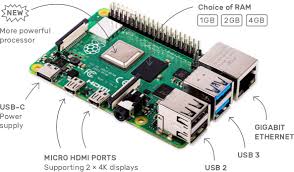NAS build
So this is the story about my NAS (Network attached storage) build. Spoiler alert, the initial implementation fails but I manage to compromise and go for a plan B.
Why ?
Well why not. :). Actually to tell you a bit of the back story. I use a Dell XPS 15 running Ubuntu as my PC and my better half uses a Dell XPS 12 running Windows 10. Our on-board disk sizes are 500GB and 250GB respectively.We keep our data in external USB drives. Vindi ( my wife ) does food photography as a side gig / hobby. So I think it's fair to say that we were having a bit of an inconvenience when it comes to storage.
How ?
So now to find a solution to my problem. The decision to go with a NAS was quite obvious- Accessible to both of us
- Accessible by all our devices
- Less upkeep after initial setup
- Seems like a fun project 😉
Hardware
I know there are off the shelf systems but where's the fun in that.
I wanted to keep the cost to a minimum so I decided to use the existing USB hard disks I have. I had 3 USB HDDs. 1TB each.
Next I needed a lightweight machine. After a bit of research I was going back and forth between 2 options.
- An embedded system like
It was quite tempting to go for an embedded system. The system comes with Processor, VGA, and Mother Board and all I had to source was the memory modules and a casing with a power supply unit. I could have sourced all that for under $200. Unlike the single board computers I can make use of the SATA interface in the embedded system. ( Or can I ? )
There are a few reasons why I didn't go down this path. First of all my aim was to open up the USB drives I had and get the SATA drives hidden within them. Luckily for me just before I start butchering the USB HDDs I found out that they don't have SATA HDDs inside of them. At least 2 out of the 3 for sure didn't. So I won't be able to use the SATA interface in the embedded system.
Second of all I have never worked on a single board computer like a RaspberryPI. I have fiddled around with PIC microchips back in the days but these single board computers seem way ahead of the game compared to those. So I decided to go down that path.
- A single board computer
So I narrowed down my options to either be the Raspberry PI 4 or the Rock64. I went with the PI due to the 2 USB 3.0 ports and due to its popularity.
Now it's time to decide on the software. Stay tuned...
PS: I did some tests to determine the expected speeds before the build. I'd write about the expectation and reality in a later post. 😁
Now it's time to decide on the software. Stay tuned...
PS: I did some tests to determine the expected speeds before the build. I'd write about the expectation and reality in a later post. 😁







Comments
Post a Comment